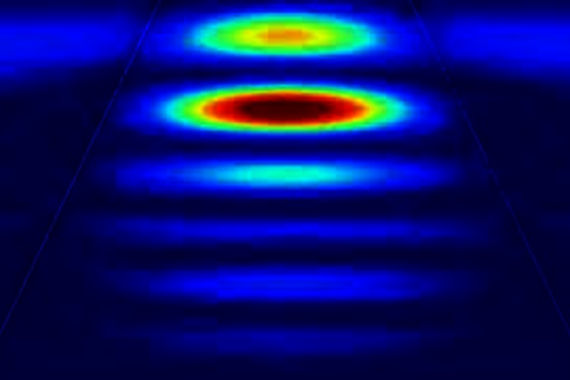New quantum sensor could improve cancer treatment
A new quantum sensor developed by researchers from TU/e and the University of Waterloo in Canada has the ability to considerably improve quantum communication and promises significant advancements in long-range 3D imaging and monitoring the success of cancer treatments.
The sensors are the first of their kind and are based on semiconductor nanowires that can detect single particles of light with high timing resolution, speed and efficiency over an unparalleled wavelength range, from ultraviolet to near-infrared.
“A sensor needs to be very efficient at detecting light. In applications like quantum radar, surveillance, and nighttime operation, very few particles of light - called photons - return to the device,” said principal investigator Michael Reimer of the University of Waterloo. “In these cases, you want to be able to detect every single photon coming in.”
Read on below the video.
The sensor is so fast and efficient that it can absorb and detect a single photon, and refresh for the next one within nanoseconds. The researchers created an array of tapered nanowires that turn incoming photons into electric current that can be amplified and detected.
Nanowire solar cells
The semiconductor nanowires were developed by TU/e researchers, led by Erik Bakkers and Jos Haverkort of the department of Applied Physics. They found that etching the nanowires resulted in higher optical quality than growing them from the bottom-up. These nanowires allow for a very low dark current - the default noise before photon absorption - meaning that the researchers achieve an excellent signal-to-noise ratio. Reimer and his team now developed the quantum sensor by optimizing the arrangement of this nanowire array to achieve a fast response time.
Bakkers: “We developed quite efficient nanowire solar cells to convert sunlight into electricity. Michael Reimer works on quantum optics and took a few cells to Canada and showed they are also very good single photon detectors. We honestly did not expect that.”
Remote sensing, high-speed imaging from space, acquiring long range high resolution 3D images, quantum communication, and singlet oxygen detection for dose monitoring in cancer treatment are all applications that could benefit from the kind of robust single photon detection that this new quantum sensor provides.
Potential for further enhancements
The semiconducting nanowire array achieves its high speed, timing resolution and efficiency thanks to the quality of its materials, the number of nanowires, doping profile and the optimization of the nanowire shape and arrangement. The sensor detects a broad spectrum of light with high efficiency and high timing resolution, all while operating at room temperature. The researchers emphasize that the spectrum absorption can be broadened even further with different materials.
“This device uses Indium Phosphide (InP) nanowires. Changing the material to Indium Gallium Arsenide (InGaAs), for example, can extend the bandwidth even further towards telecommunications wavelengths while maintaining performance,” Reimer said. “It’s state of the art now, with the potential for further enhancements.”
Once the prototype is packaged with the right electronics and portable cooling, the sensor is ready for testing beyond the lab. “A broad range of industries and research fields will benefit from a quatum sensor with these capabilities,” said Reimer.
Top image: Artist's redering of the intraction of single incident photon pulsesand a tapered semiconductor nanowire array photodetector. Photo | University of Waterloo
![[Translate to English:]](/fileadmin/_processed_/e/8/csm_Interaction_of_single_incident_photon_pulses_and_tapered_semiconductor_nanowire_array_photodetector_779ea13c60.jpg)


Discussion